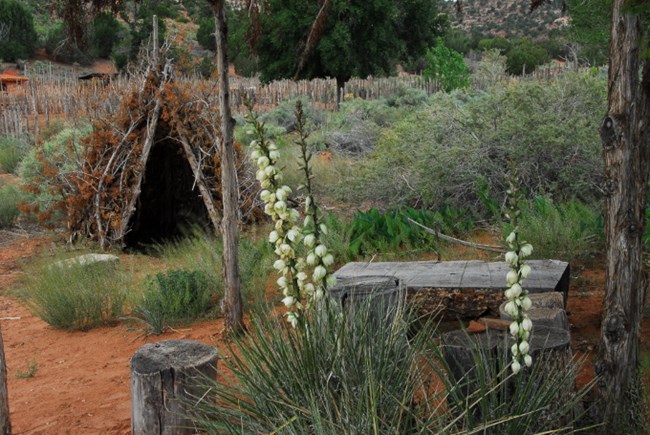|
. . . Paiutes once lived in homes just like the Ancient Ones as they dwelled near the spring. When the Spanish came . . . bringing with them the slave trade, the women and children were carted off to slave markets. When the Navajos and Utes started coming into the area [slave raiding], the Paiutes made the decision to move away from the water— to retain their women and children . . . losing traditions, losing their way of life, adapting to the desert.
Kaibab Paiute tribal member For the Kaibab Paiute in the 1800s, living in these high deserts and canyons meant they moved season by season. The available food might be collected in just a matter of weeks. Streams or waterholes were many miles apart. It made good sense to stay in rock shelters, or to put together encampments using materials close at hand. 

|
Last updated: April 16, 2020
